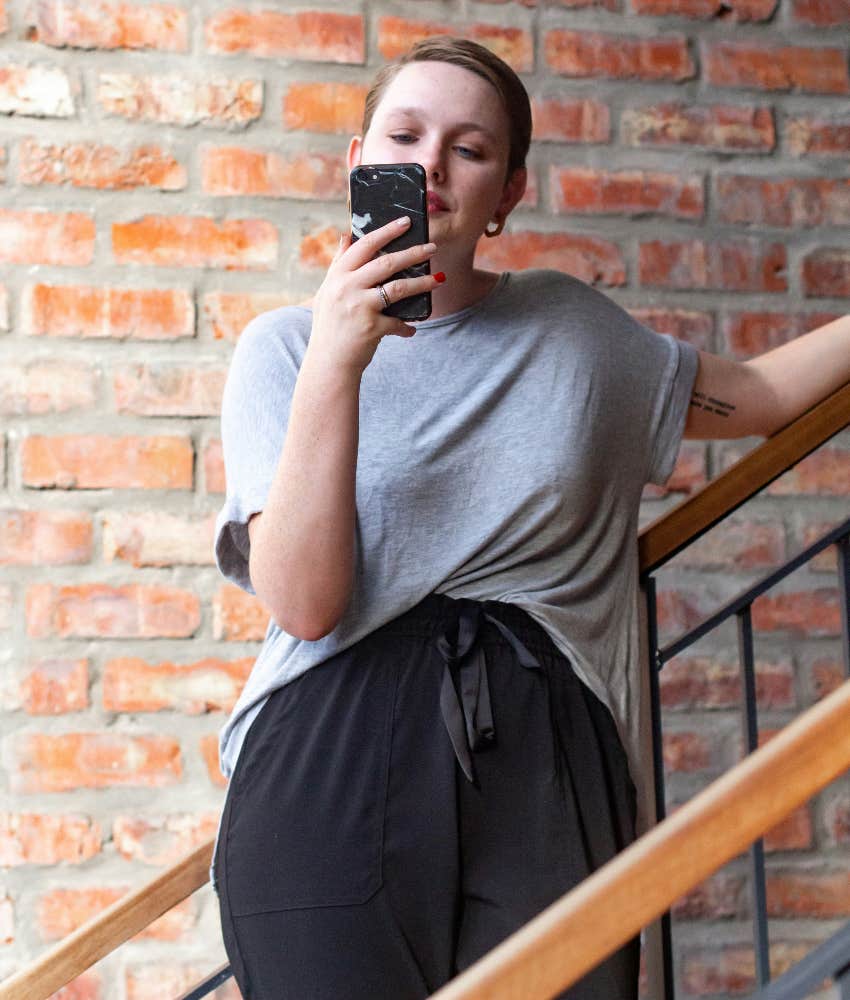5 Normal Things Partners Do That Send Anxiously Attached People Into A Spiral, According To A Love Coach
Recognizing these patterns can help you begin to heal yourself and your relationships.
 Schayan Kasmaei | Unsplash
Schayan Kasmaei | Unsplash The fascinating science of attachment theory, which explains how our early bonds with our parents or caregivers shape our emotional development throughout life, has all kinds of impacts on our lives. But no part of us is more affected than our relationships, whether it's friends, co-workers, or especially our romantic partners.
This is because our attachment style impacts not just our emotions, but how we respond to uncertainty, and relationships are full of uncertainty, especially in the beginning. There are four basic attachment styles. Those with Secure Attachment, the lucky few whose parents or caregivers effectively met their emotional needs, and are hence able to trust themselves, ask for what they need and often self-navigate crises.
Those with Avoidant Attachment are emotionally guarded and often perceived as "lone wolves," resulting often from an upbringing in which their physical needs were met but their emotional needs were neglected, forcing them to turn inward. Avoidants are also frequently survivors of physical abuse, as are those with Disorganized Attachment, who tend to be survivors of particularly tumultuous childhoods with erratic and abusive parents.
Then there's Anxious Attachment, which usually results from an upbringing in which their emotional needs were neglected or met inconsistently, leaving them with things like abandonment issues. This form of attachment can be particularly challenging to identify because the events that result in it are not as discrete and obvious as abuse or neglect, despite often being just as damaging.
A relationship coach shared normal things in relationships that send anxiously attached people spiraling:
You can probably guess the sorts of dynamics that arise with Anxious Attachment. They're often described as "clingy" and frequently have tendencies toward codependent behaviors. They're also often suspicious and fearful that they're going to be abandoned. For them, this distrust can color all sorts of normal things into what feels like red flags or threats.
Nicole Moore, a self-described "celebrity love coach" known as @nicolemoorelove on TikTok, shared five helpful examples of how this often plays out in a relationship with an anxiously attached person, especially in those early stages of a relationship where things can sometimes be a bit hard to read.
"The downfall of most people with anxious attachment is not being able to calm themselves down when these things happen," Moore said in a video on the subject. Knowing what to look for can help you avoid these behaviors if you think you may have this type of attachment, and help you understand them if your partner does.
1. Delayed responses
 Sincerely Media | Unsplash
Sincerely Media | Unsplash
Getting mad because a text wasn't responded to immediately. Taking a missed call as a break-up indicator. These are the kinds of responses an anxiously attached person might have to communication delays. Abandonment is always top of mind to them, of course.
Moore, who herself has experienced anxious attachment, said that this one was such a problem for her that she'd often lose sleep if a guy didn't return her text. This threat feels very real to people suffering from anxious attachment, but it's important to manage expectations. Take a breath and try not to read too deeply into things. More often than not, a missed text is just a missed text.
2. Changes in routine or plans
Moore said that these changes often spark suspicion in people with anxious attachment, not necessarily in terms of jealousy, but once again in terms of that fear of abandonment, making them jump to conclusions. As Moore put it, "You're like, 'oh my god, are they with someone else? Did they lose interest in me?'"
3. Being active on social media
 Prostock-studio | Canva Pro
Prostock-studio | Canva Pro
Moore said people with anxious attachment will often spend tons of time "excessively scanning their [partner's] social media for signs of a threat" and construing any likes on a woman's post to be an indicator of two-timing or cheating, and, of course, a forthcoming rupture. But more often than not, social media use is just social media use, and if there's more to it, it will be a lot more obvious than a few likes.
4. Being distant
This one's tricky, of course, because distance CAN mean that something has gone awry or your partner is being withholding. But as Moore explained, it can also just mean they're sick, or consumed with work, have something going on in their family, and a number of things that have nothing to do with their partner. But for the anxiously attached, this feels like yet another red flag for abandonment.
5. Being independent
People with anxious attachment will often construe their partner pursuing an activity or personal interest without inviting them along as some kind of slight. Even their partner just needing some alone time becomes another indicator that they're unhappy and pulling away. But all of us need our alone time and we all need a thing or two that are just for us, or for us and our friends. It doesn't need to mean any more than that.
Recognizing these patterns is an opportunity to begin healing your attachment style for better relationships.
"Underneath all of these triggers is a deep fear that you're gonna lose love, so you always have to be hypervigilant," she explained. "The downfall is that most people with anxious attachment, instead of using these triggers as a wake-up call to … learn to self-soothe when I get triggered, they don't do that."
Instead, they immediately go to their partner for validation, often in very needy or "clingy" ways, which often ends up leading to the breakup they've been fearing all along. "When I stopped projecting my neediness and insecurity on the people I was dating, that's when I attracted in my amazing safe, secure husband," Moore said.
So if you recognize these tendencies in yourself, try to take them as an impetus for digging into your own feelings and past, so you can stop them from disrupting your present and future. It will help you heal and put you on the path to a beautiful relationship.
John Sundholm is a writer, editor, and video personality with 20 years of experience in media and entertainment. He covers culture, mental health, and human interest topics.

